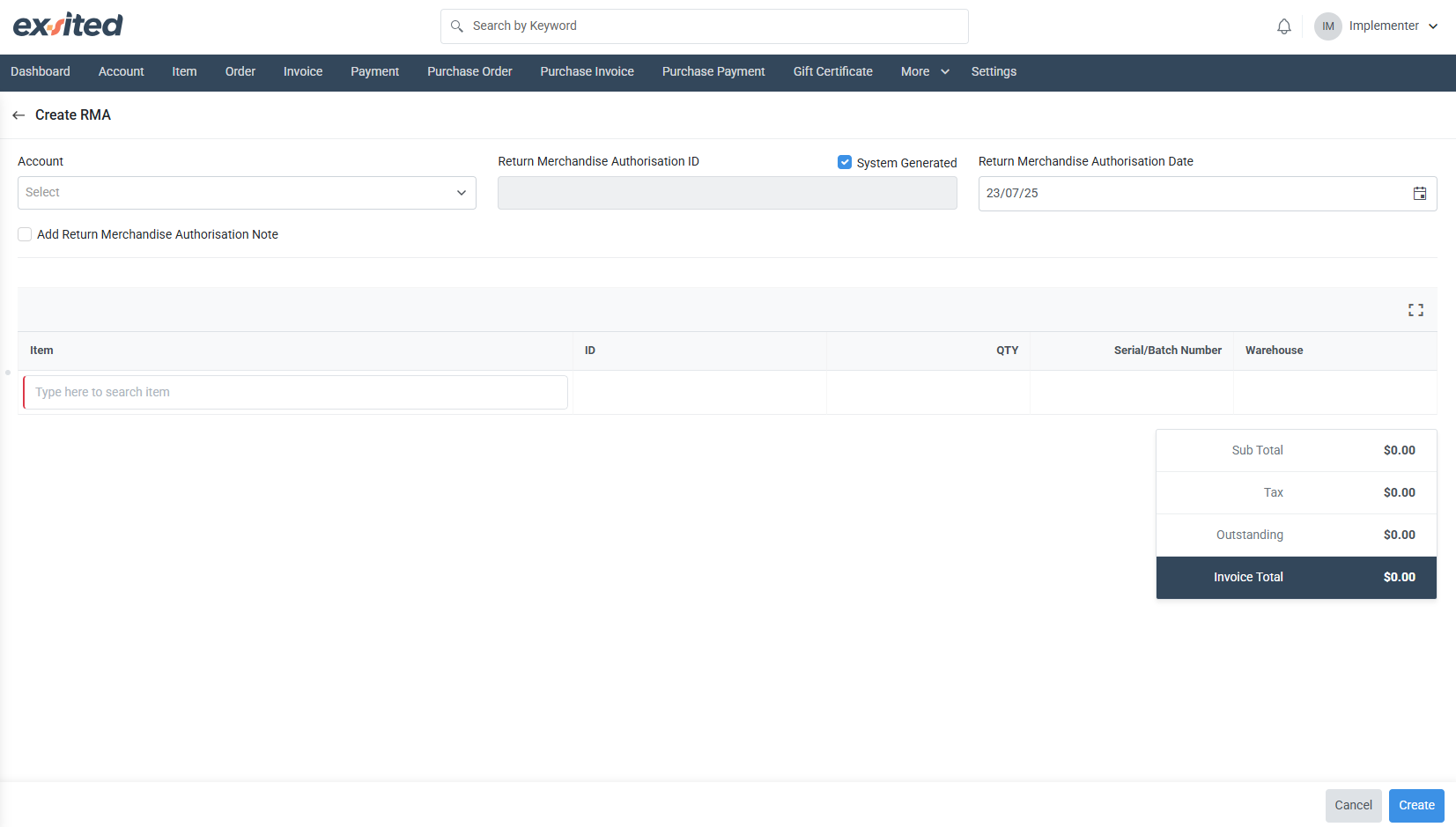Extended Modules Overview
The Extended Modules section includes optional yet powerful components that enhance Exsited’s core platform by supporting advanced operational, logistical, and data-driven workflows. These modules—such as the Fulfilment Center, Receive Center, RMA, and Item Center—streamline processes related to inventory movement and control, while others like Gift Certificates and Dunning Reports enable customer engagement and financial recovery. System-level tools like CSV Import/Export provide flexibility for data management and integration. Collectively, these modules are designed to extend the platform’s functionality for teams managing complex or large-scale operations, offering greater control, automation, and adaptability.
Gift Certificate Module
Overview:
The Gift Certificate module in Exsited is designed to manage digital or physical gift certificates issued to customers. It provides a centralised interface to track the issuance, usage, and expiration of certificates.
Key Functionalities:
- Add new gift certificates with value, allocation details, and expiry dates.
- Monitor remaining balances and used amounts.
- Search and filter by expiry date and remaining balance.
- Audit history of allocation and redemption.
Fields Displayed:
- Code – Unique identifier for each certificate.
- Remaining Balance – Amount left to be used.
- Used Amount – Value already redeemed.
- Allocation – Linked customer or order.
- Expiry Date – Validity period.
- Created Date – Date when the certificate was generated.
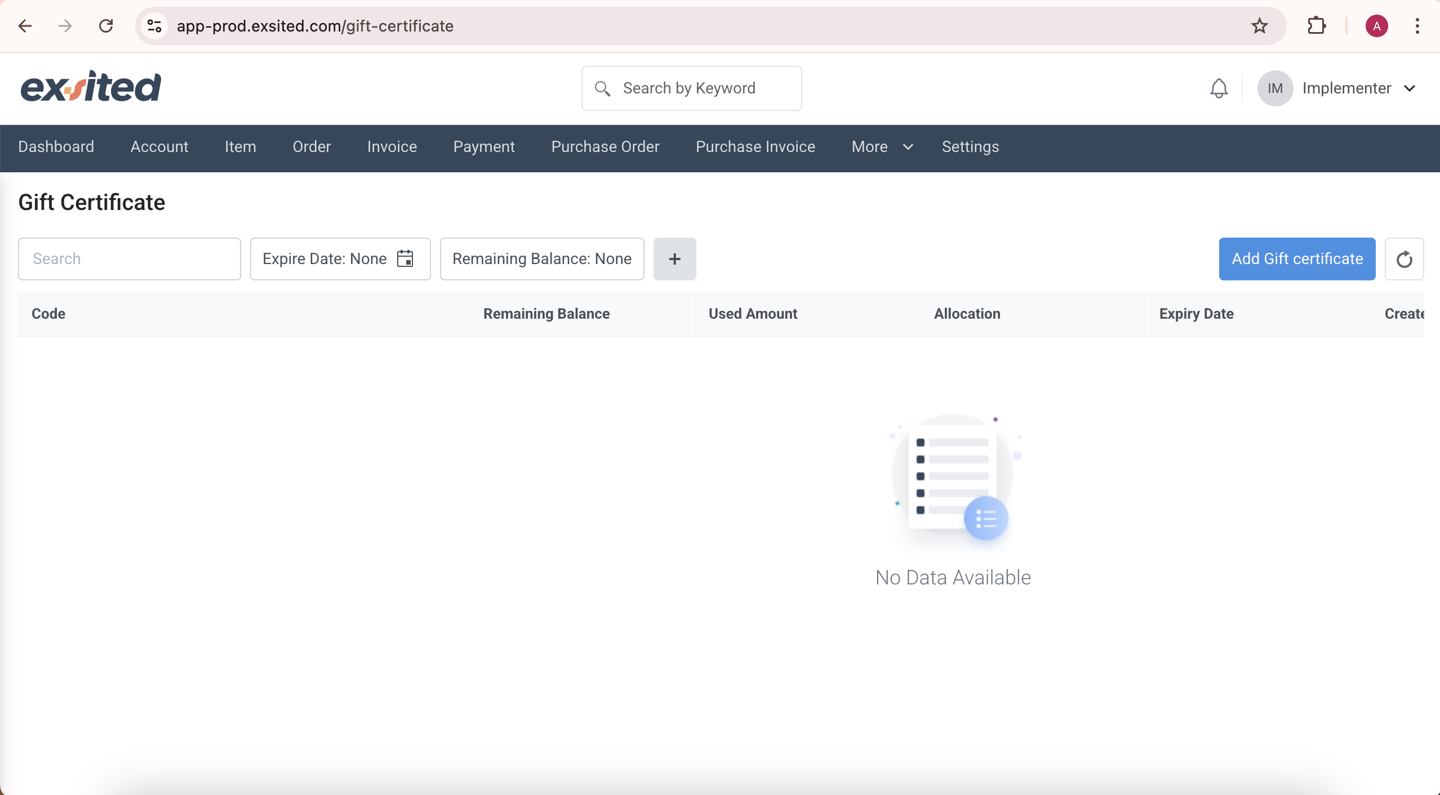
Dunning Report
Overview:
The Dunning module is used for tracking overdue invoices and automating customer follow-up communications. This ensures timely collection and helps reduce bad debt through structured reminders.
Key Functionalities:
- Filter by Currency, Operator, and Date Range.
- Log of communication activities triggered (Email, SMS, Voicemail, Postal Mail).
- View how many invoices were processed in each dunning run.
Fields Displayed:
- Date – Timestamp of dunning execution.
- Invoice Processed – Number of overdue invoices handled in the run.
- Email / Text Message / Voicemail / Postal Mail – Communication channels used and their respective counts.
- Operator – User who executed the dunning action.
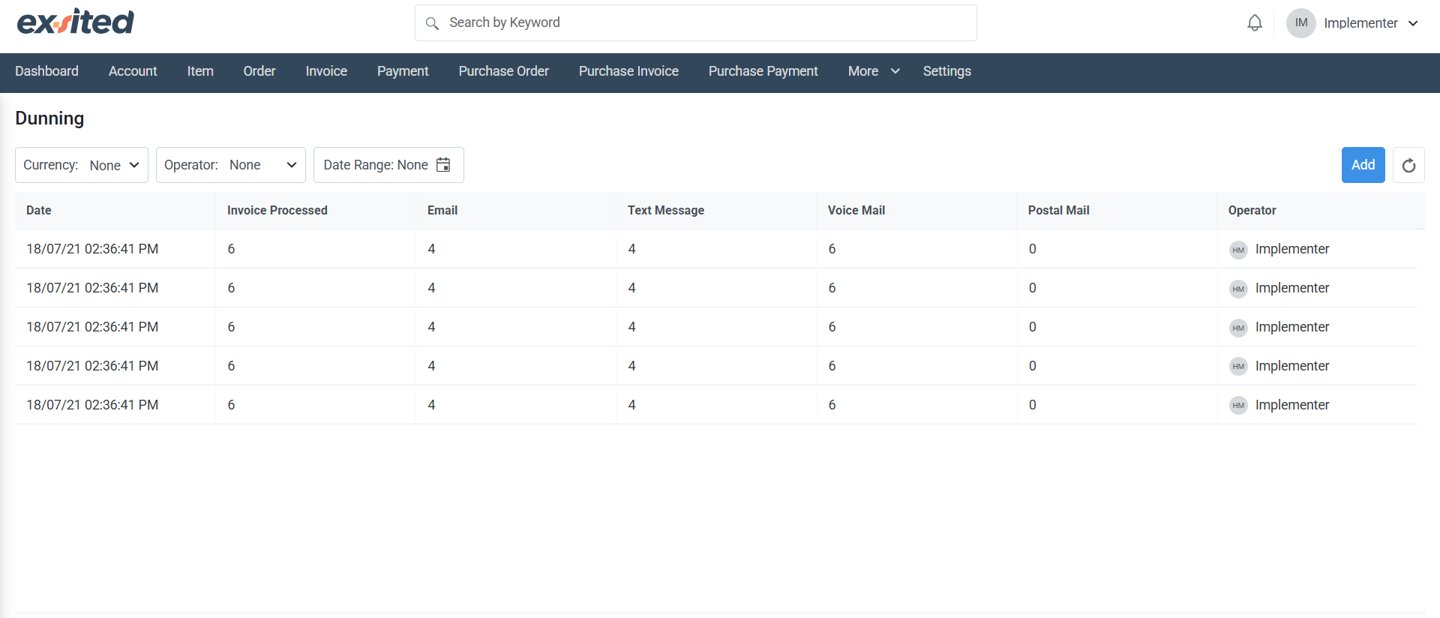
CSV Export
Overview:
This module allows users to export transactional or master data from Exsited into a CSV file for reporting, backup, or migration purposes.
Key Functionalities:
- Create custom export jobs with selectable data modules (e.g., invoices, items, payments).
- Filter export history by Date, Data Type, or Exported By user.
- Monitor export results, including successful and failed records.
Fields Displayed:
- Date – When the export was performed.
- Data – Type of exported data (e.g., Invoice, Item).
- Records Exported – Number of successful records.
- Records Failed – Count of failed rows (if any).
- Exported By – User who executed the export.
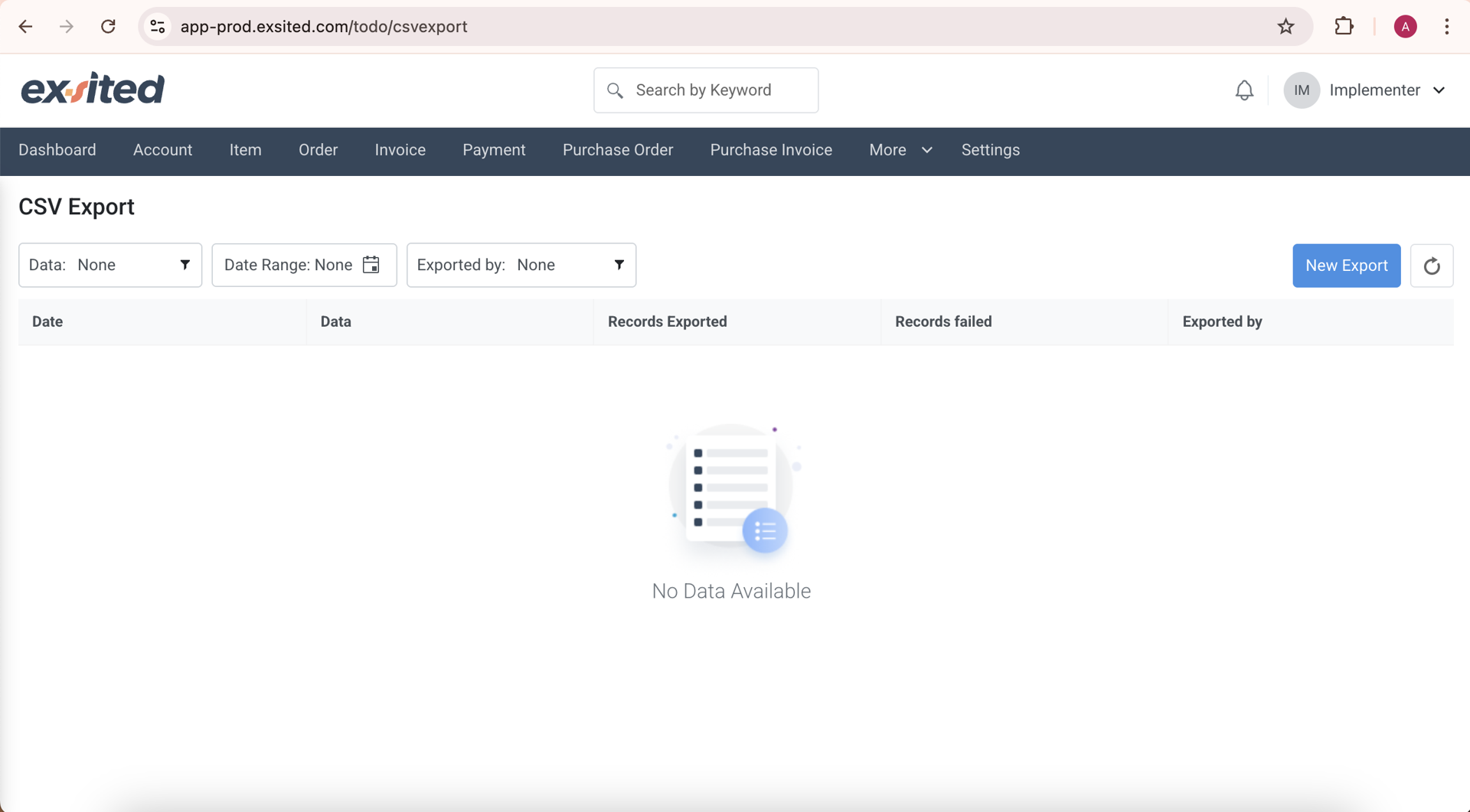
CSV Import
Overview:
The CSV Import screen supports bulk data uploads into Exsited, reducing manual data entry and enabling large-scale updates across modules like Items, Customers, Invoices, etc.
Key Functionalities:
- Start new imports using the “New Import” button.
- Access previously saved mapping templates for repeatable imports.
- Monitor import logs with details on success/failure for each record.
Fields Displayed:
- Date – Date the import was executed.
- Data – Type of data imported.
- Records Inserted – New records created.
- Records Updated – Existing records modified.
- Records Failed – Count of errors during import.
- Imported By – User responsible for the import.
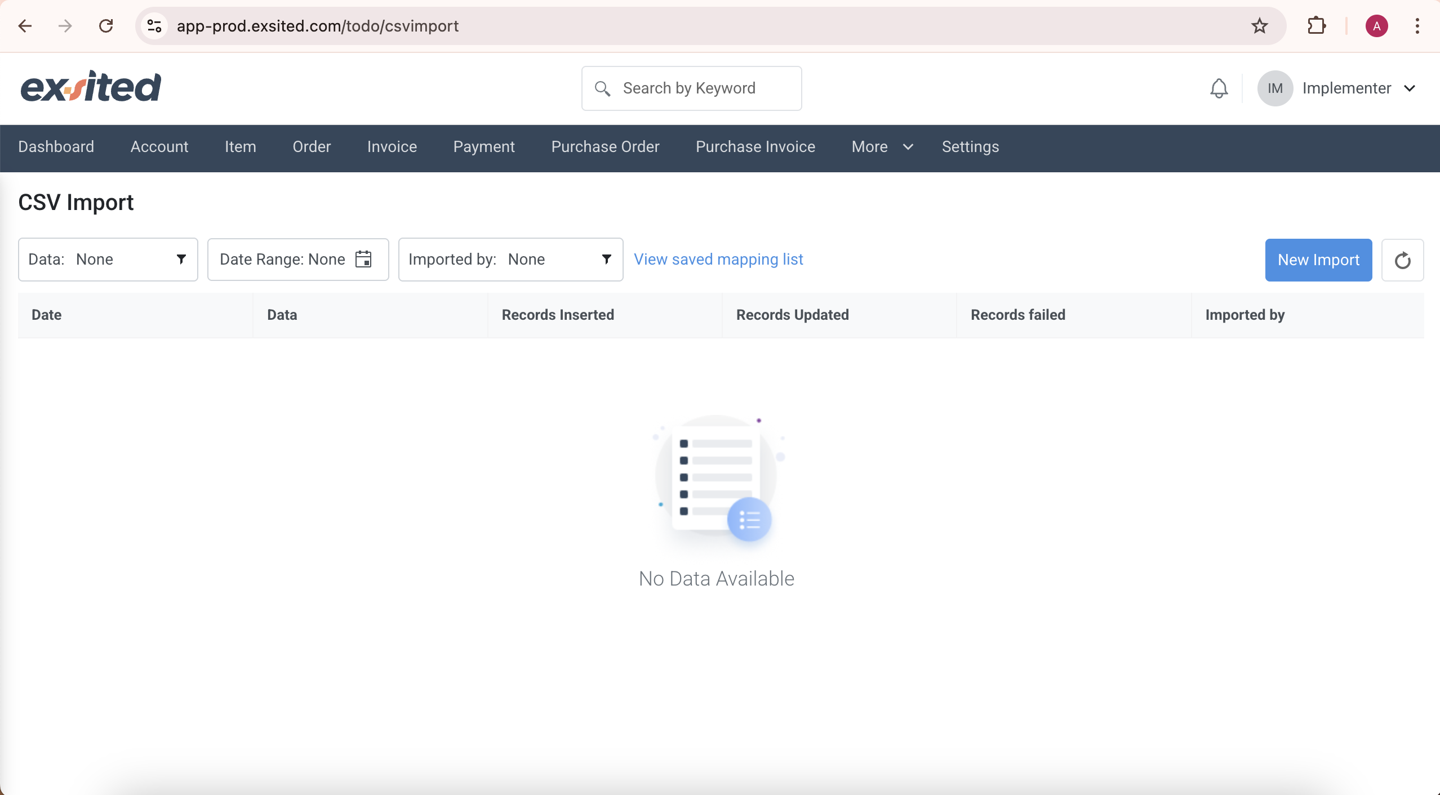
Fulfilment Center
Overview:
This module manages order fulfilment workflows across four stages: New, Pick, Pack, and Completed. It ensures accurate processing and shipment from warehouse to customer.
Key Functionalities:
- View new sales orders awaiting fulfilment.
- Check stock availability by item and warehouse.
- Generate shipment documents with "Create Fulfilment".
- Mark orders as shipped once dispatched.
Fields Displayed:
- Ship to – Linked invoice and delivery date.
- Name / ID – Ordered item name and code.
- Warehouse – Fulfilment location.
- Order Quantity / Stock Available – Quantities ordered and available.
- No Shipping Profile – Indicates missing logistics configuration.
Example: Order includes 1 unit of “Chairs for Test” and “Item TNT,” with stock partially available.
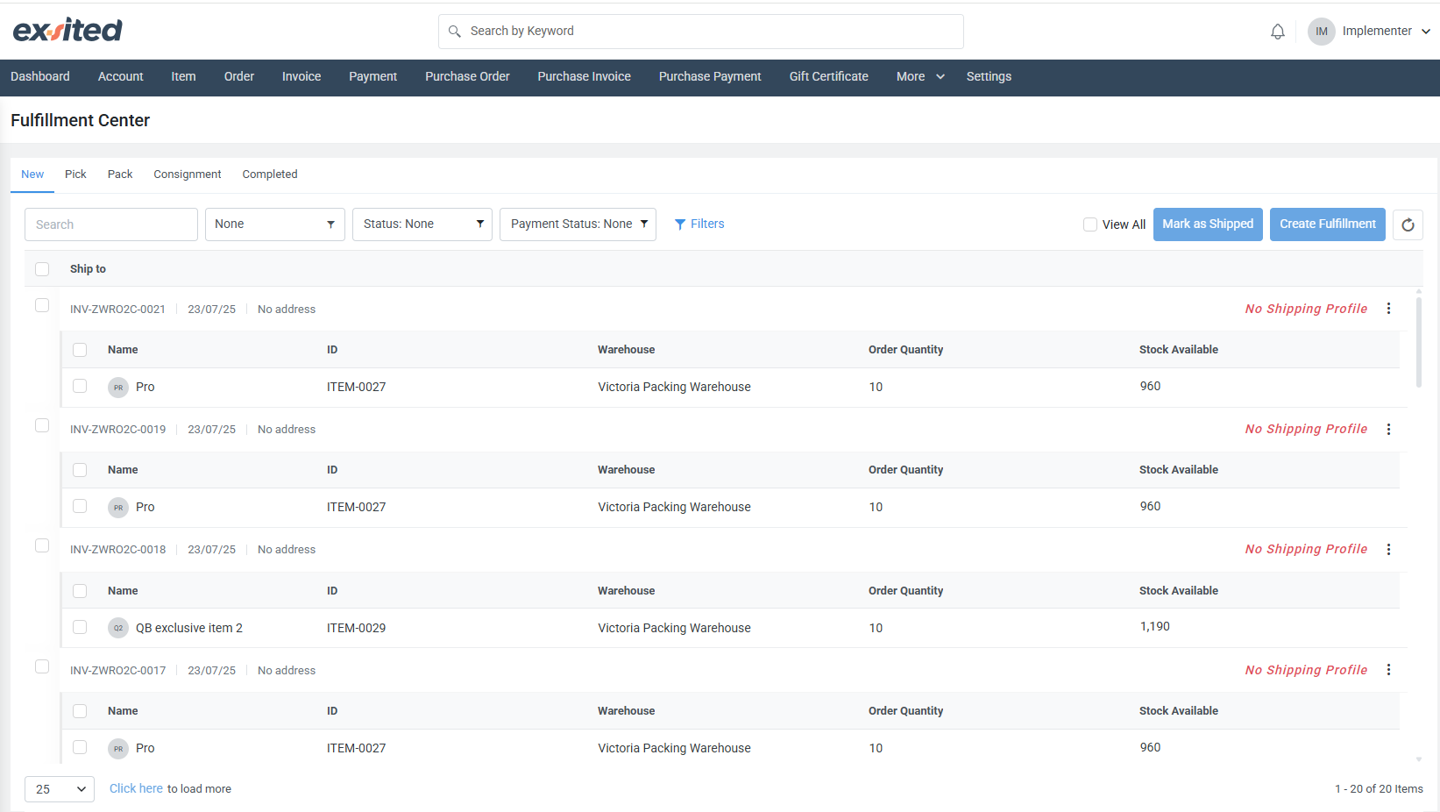
Item Center
Overview:
The Item Centre is the hub for managing all product and service listings in the system. It supports price management and inventory control.
Key Functionalities:
- Manage Base Price, Specific Price, and Inventory views.
- Edit base prices directly within the grid.
- Group and sort items for analysis and bulk updates.
Fields Displayed:
- Name / ID – Item title and system code.
- Base Price – Standard selling price editable per item.
Example: “Item for export” has a base price of 150.00, and “Test Items _OM” has 250.00.
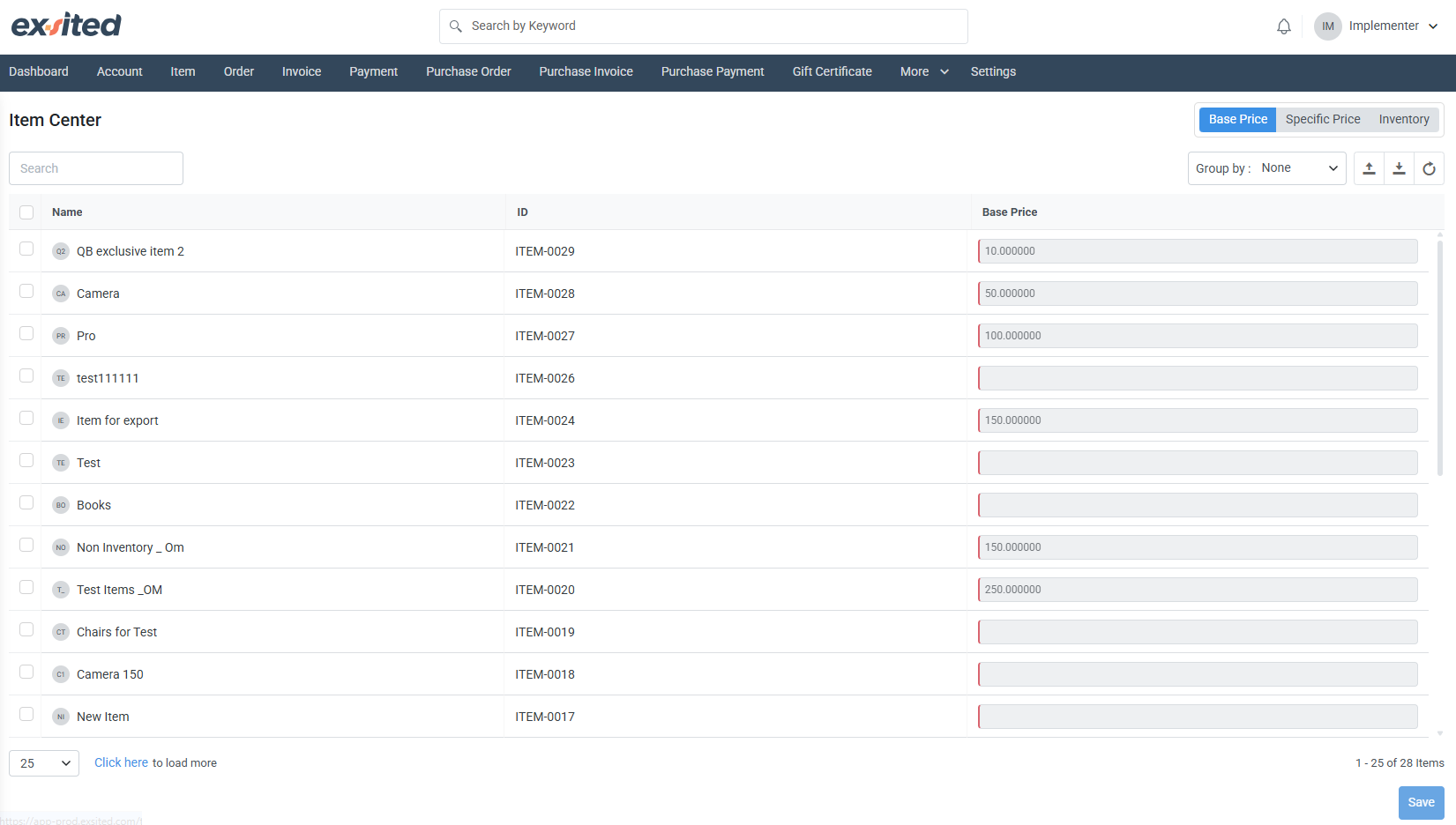
Receive Center
Overview:
The Receive Centre is used for goods receiving operations tied to purchase orders. It ensures inventory updates based on supplier deliveries.
Key Functionalities:
- View all pending and completed receipts.
- Search by supplier, status, or item.
- Review purchase order quantities against stock received.
- Finalise receipts using “Create Receive”.
Fields Displayed:
- Receive from – Supplier and PO reference.
- Item Name / ID – Goods delivered.
- Warehouse – Location receiving stock.
- Purchase Order Quantity / Stock Available – Qty expected vs in stock.
Example: Jade Liza's PO shows Laptop 34 (ITEM-0004) delivered with 2 units in stock.
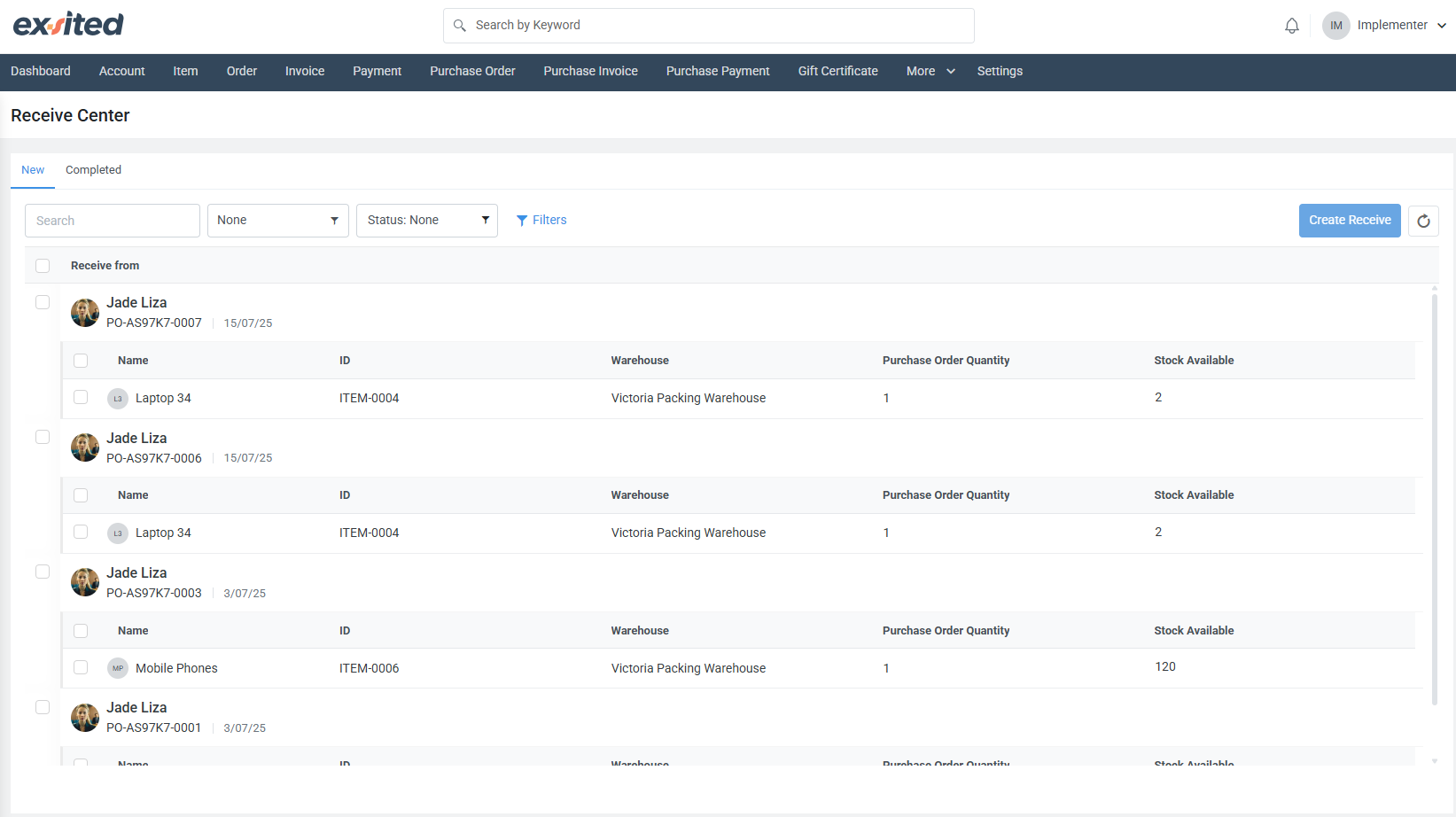
Return Merchandise Authorisation (RMA)
Overview:
This module handles product returns from customers. RMAs are tracked to ensure accurate reconciliation of goods, refunds, or replacements.
A. RMA List View
Key Functionalities:
- Track all return requests by ID, customer, invoice, return date, and status.
- Filter by Customer Return Date or search by customer/account.
- Generate a new return with the “Create RMA” button.
Fields Displayed:
- ID / Account / Invoice – Return identifiers.
- Customer Return Details – Quantity, count, and reasons.
- Created / Updated Info – Record management metadata.
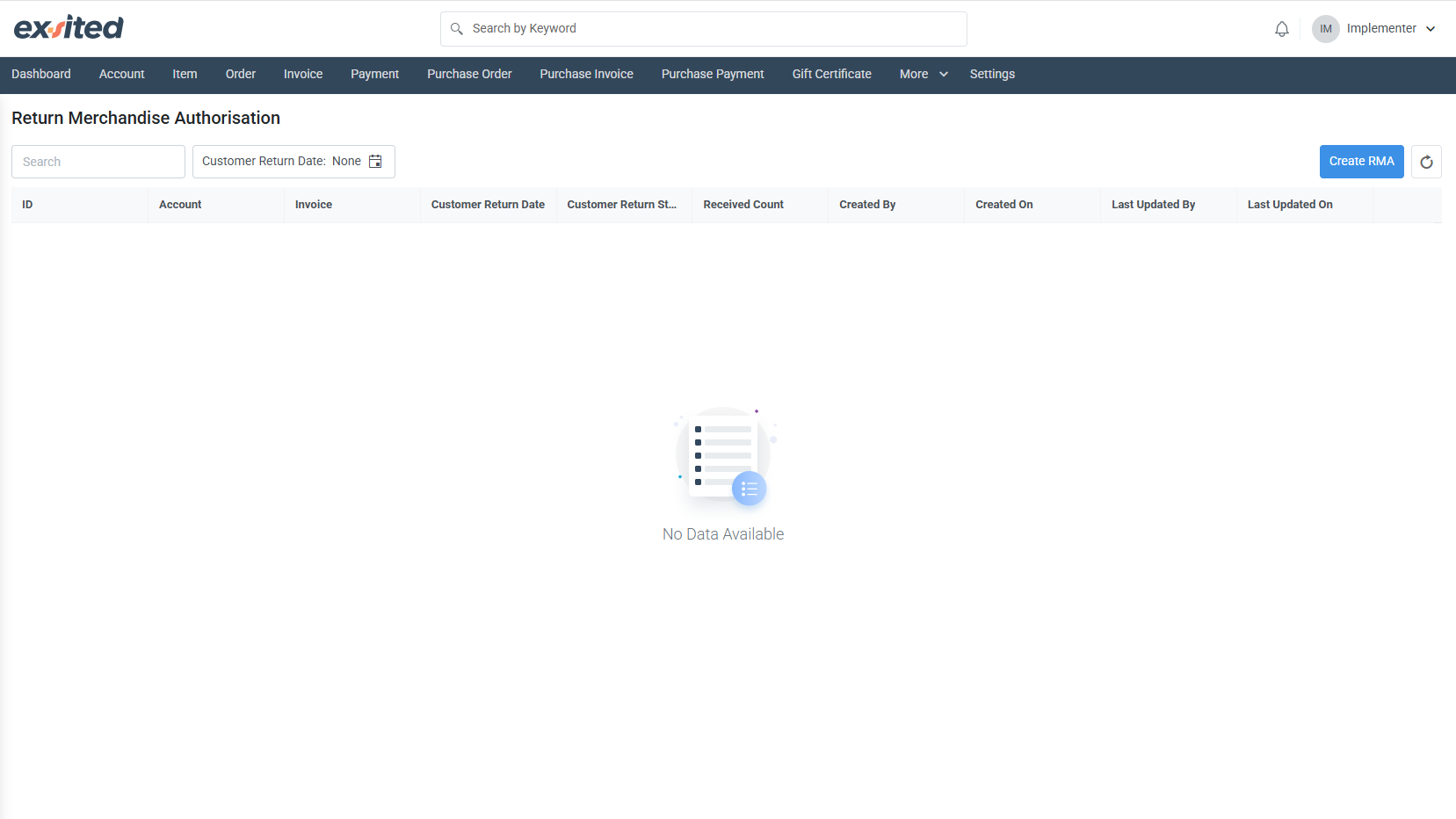
B. Create RMA Screen
Overview:
Used to initiate a new return request. The return ID can be system-generated or user-defined. Users specify the account, items, and reasons for the return.
Key Functionalities:
- Select account from dropdown.
- Enter item, quantity, serial/batch number.
- Assign warehouse and enter notes.
- RMA Date defaults to current but can be edited.
- “Create” button submits the return request.
Fields Displayed:
- Return Merchandise Authorisation ID – Automatically generated.
- Account – Customer initiating return.
- Return Date – Scheduled or actual return date.
- Item / QTY / Serial / Warehouse – Product-level return details.
- Sub Total / Tax / Grand Total – Calculated cost impact of returned goods.
